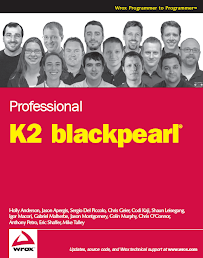Service Descriptions
Some of you may be aware but many of the service descriptions associated to Office 365 have been updated in the past month. It is really easy to find all of the Office 365 Service Descriptions – just search on “Office 365 Service Descriptions”. I highly recommend that you bookmark these locations because this is where the new service descriptions are always released. To save you a few seconds:
Now the reason why I say bookmarks these is when there are changes to the service descriptions this is where you can get the updated documentation. This Fall has seen a few updates to service descriptions and for readers of this blog (whom are generally SharePoint people) there have been some updates.
SharePoint Online Multi-tenant Updates
In November 2011 there was an update to the SharePoint Online service description. There are a couple updates that you should be aware of:
- Business Connectivity Services (BCS) – is now available. Yes we heard about it at the SharePoint conference but now it available in the service descriptions. It supports WCF Web Service End Points (basically you need a WSDL web service available). This is great if you are trying to go completely cloud and you want to use Azure (PaaS) to use such things as Azure services, SQL Azure, App Fabric, etc. with SharePoint Online. So if you have complex data structures you want to manage and integrate directly in SharePoint use SQL Azure. If you can use App Fabric to connect premise back end applications, making those services available through SharePoint Online.
- A new capability available for partner accounts that are using Windows Live ID. Please read the service description for specifics. I personally think this is a huge new offering because SharePoint Online in general is a great solution of Partner Portals (Extranets). Nothing against doing an extranet on premise (and they work well), but it just takes more configuration and management than what system administrators what to take on responsibility for. With this partners can be given secure access to areas of content in SharePoint Online and they do not have to manage accounts in AD, Forms Auth, etc. This is absolutely huge and when I sit back and look at what SharePoint Online is offering as a whole, SharePoint Online has so many redeeming qualities for Partner Portals.
- There are a lot of new “Notes” that have been added to the service description that clearly communicate some of the most common questions that I have had over the past few months. I highly recommend reviewing these.
SharePoint Online Dedicated Updates
For the SharePoint Online Dedicated plan was updated in October 2011; there have been some updates that you should be aware of.
- Increased storage the max storage limit to 120 TB (which is 4 times more than previous). That is a whole lot of storage available to an organization. All the rules associated to purchasing extra TBs of storage to get to that 120 TB still hold the same.
- There is a new Administration portal for you to manage configuration requests, a new reports area providing analytic reports on usages and such, and support documentation.
- Active Directory Rights Management with IRM is now available for document libraries. SharePoint Online (both dedicated and multi-tenant) to store documents that had rights added prior to upload in SharePoint (and it is still supported). However the challenge is the document cannot be indexed. Now for SharePoint Online Dedicated, the document library IRM configuration is available so you can set rules on a document library and when the document is taken out of the SharePoint Online site, the IRM rights will be applied based on the setting in the document library. Documents put in a library using this new way are searchable.
- There is new support for Data Loss Prevention (DLP) solutions to scan SharePoint Online for sensitive content, PII, etc. Read the documentation for details.
As well there have been October 2011 updates to the “Custom Solution Developer’s Guide” and “Custom Solution Policies and Process”. I would review these. As well in the Custom Solution Developer’s Guide there is a listing of the SharePoint 2010 third-party solutions that are approved to run in the dedicated cloud. This is an evolving list and addition to this list is accomplished by having a customer basically take a third party solution through the approval process.
Finally there is a new document called “Content Migration Policy and Storage Design for SharePoint 2010”. This is a really interesting document because it actually gives you some real insight into the storage architecture and how we manage quotas for site collections and such. I would even say a premise deployment of SharePoint 2010 should read this document take some best practices from it to implement on premise.




